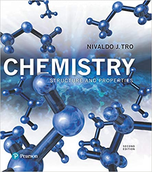?The salt ammonium nitrate can follow three modes of decomposition: (a) to
Chapter 18, Problem 108(choose chapter or problem)
The salt ammonium nitrate can follow three modes of decomposition: (a) to \(\mathrm{HNO}_{3}(g)\) and \(\mathrm{NH}_{3}(g)\), (b) to \(\mathrm{N}_{2} \mathrm{O}(g)\) and \(\mathrm{H}_{2} \mathrm{O}(g)\), and (c) to \(\mathrm{N}_{2}(g), \mathrm{O}_{2}(g), \text { and } \mathrm{H}_{2} \mathrm{O}(g)\). Calculate \(\Delta G_{\mathrm{rxn}}^{\circ}\) for each mode of decomposition at 298 K. Explain in light of these results how it is still possible to use ammonium nitrate as a fertilizer and the precautions that should be taken when it is used.
Text Transcription:
HNO_3(g)
NH_3(g)
N_2O(g)
H_2O(g)
N_2(g)
O_2(g)
H_2O(g)
Delta G_^circ rxn
Unfortunately, we don't have that question answered yet. But you can get it answered in just 5 hours by Logging in or Becoming a subscriber.
Becoming a subscriber
Or look for another answer
